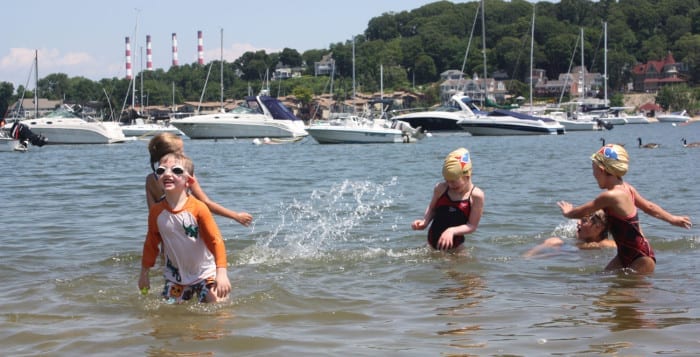At a Port Jefferson village board meeting Feb. 4, Mayor Margot Garant held up a picture of West Broadway in front of Ecolin Jewelers from March 2, 2018. It’s a panorama of part of the village underwater after the area was hit by winter storm Riley, taken by photographer Craig Smith.
Though that photo spoke of how the village had once been known as Drowned Meadow, Garant said it was telling that the picture could have been any number of occasions in the past year.
“Unfortunately, this is becoming an all too familiar picture,” Garant said. “We have probably had five or six events since 2018 that caused the three-way intersection to flood … flooding in and around Barnum Avenue is becoming a regular concern.”
“In short, I think it’s going to get worse.”
— Frances Campani
In July 2018, Port Jeff put in an application to New York State for a Local Waterfront Revitalization Program grant to update the 2013 Waterfront Revitalization Plan, an appendix to the village Comprehensive Plan Update. At the Feb. 4 meeting the board voted to go forward with Port Jefferson-based Campani and Schwarting Architects, who in part submitted for the grant last year, to create a visioning study to address the issue of stormwater runoff, storm surges and future rising tide protection in an effort to resubmit for the grant in July.
The proposed analysis would look at the flooding problem in the harbor, including Main Street and East and West Broadway, what causes it and what is predicted to happen in the next two, five and 10 years.
“In short, I think it’s going to get worse,” said architect Frances Campani.
In addition, the proposal document for the visioning study states they would study the watershed groundwater flooding problem, including bringing in existing data on stormwater catch basins, the culvert running to the Mill Creek at Village Hall, flooding and ponding at Barnum Avenue and flooding in the area between Wynne Lane and Maple.
While the shoreline and Harborfront Park would be the expected areas of concern, Campani said the most concerning areas are East and West Broadway and the main stormwater drainage line, which partially runs underground and has become overcharged with water in the past. She added another problem could be the amount of asphalt in the village, which unlike dirt cannot absorb any water. In addition, there could be a mention of widening certain parts of Mill Creek to allow more water flow.
“Two things should be studied, certainly the park itself with an eye to flood mitigation and waterfront park design methods to help the uplands areas,” said Campani at the Feb. 4 meeting. “Also the watershed area — it’s so closely linked we should tie them together as a study.”
“A thing that really needs to be looked at is where do you put the water.”
— Larry Lapointe
In September 2018, Port Jefferson was hit with major rains that inundated the village in water, causing people to become trapped in their cars and thousands of dollars in damage to local businesses, especially village staple Theatre Three. In the basement of the venerable theater, waters rose as high as four or five feet. New York State Assemblyman Steve Englebright (D-Setauket) said he was concerned that such damaging flooding could happen at low tide.
He and other local officials feared what could happen if the same circumstances occurred at high tide.
The visioning study proposal said it would be completed in four months, adding up to a total cost of $9,800.
Village trustee Larry LaPointe said it was important to consider just where the water might go in efforts to drive it away from the village business hub.
“A thing that really needs to be looked at is where do you put the water,” LaPointe said. “How do you get the water to go into places where it’s not interfering with our use of the village?”







